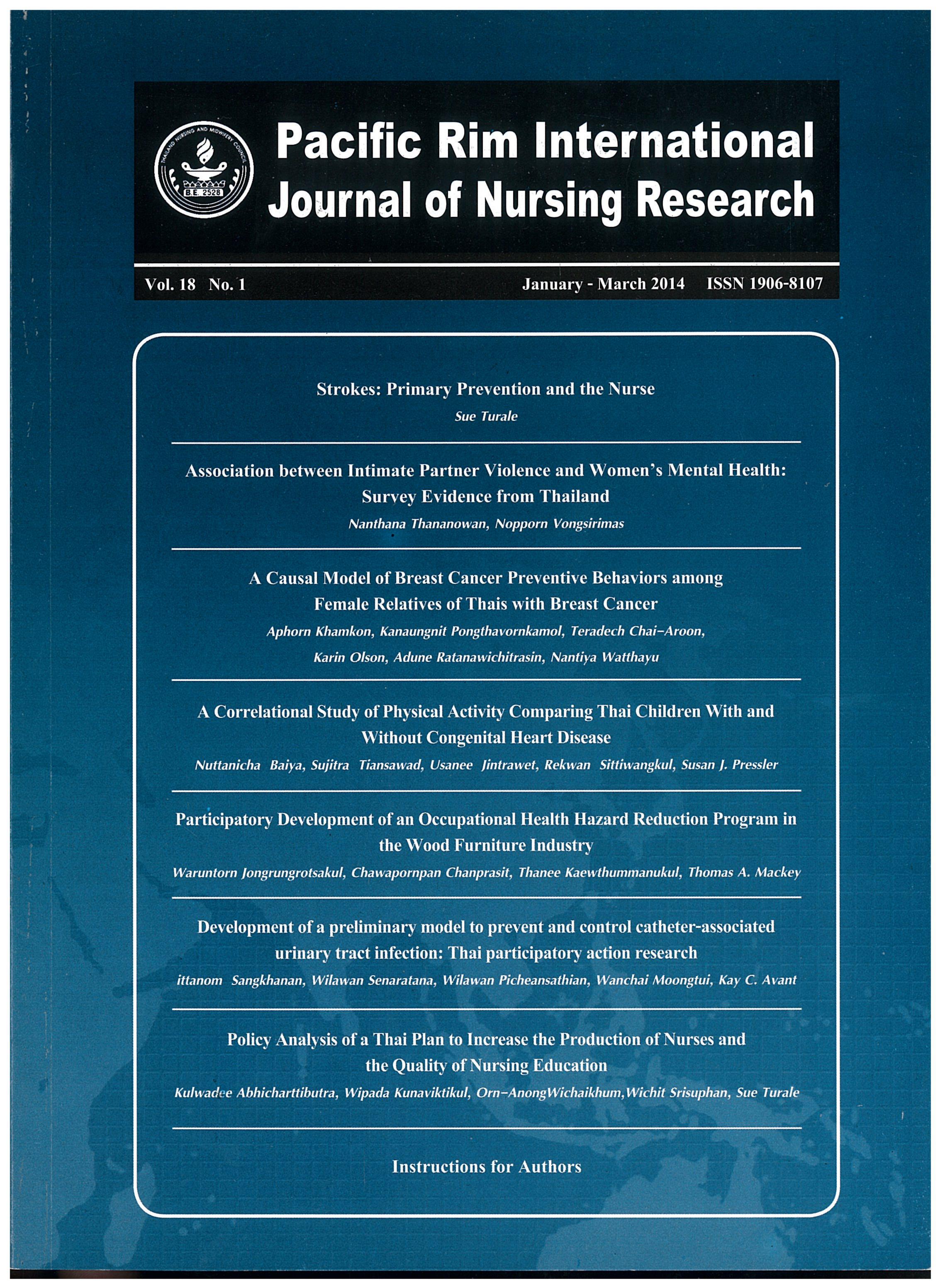Participatory Development of an Occupational Health HazardReduction Program inthe Wood Furniture Industry
Keywords:
Catheter associated urinary tract infection, Infection control, Evidence-based practice, Participatory action researchAbstract
In this participatory action research the Model for the Prevention and Controlof Catheter-associated Urinary Tract Infection was developed. This type of infection is oneof the most common hospital acquired infections. A core working group of 14 people fromthree medical intensive care units in a tertiary care hospital in Thailand were empowered todevelop this preliminary Model by collaborating with 26 nursing personnel and two physiciansin the study settings. Data were collected using mixed methods: group discussions, in-depthinterviews, facilitating group meetings and workshops.The findings of this study included the following about the infection: inadequateknowledge, lack of awareness, ineffective communication and collaboration among themultidisciplinary team, and no continuous monitoring system about the practices of healthcareworkers. The crucial components of the preliminary Model were: 1) updated evidence-basedpractice guidelines for prevention, 2) education training sessions, 3) a prevention campaign,4) a sharing forum 5) practice monitoring, and 6) providing feedback and reinforcement.The research findings demonstrated that using participatory action research focusing onmultidisciplinary team involvement was effective in developing an appropriate preliminarymodel for catheter infection prevention and control that could be applied in a hospital setting.A future paper will describe the implementation of this Model, after which research is requiredto validate it in other settings and with other groups.
Downloads
Published
How to Cite
Issue
Section
License
Copyright: The Pacific Rim International Journal of Nursing Research, Thailand Nursing & Midwifery Council has exclusive rights to publish, reproduce and distribute the manuscript and all contents therein.








.png)



